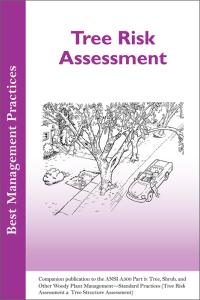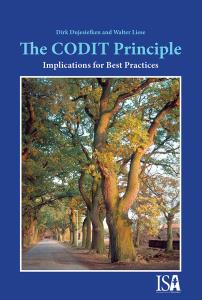- General safety
- Electrical hazard
- Use of vehicles and mobile equipment
- Portable power hand tools
- Hand tools and ladders
- Work procedures
-
Sale!The 2012 revision of the ANSI Z133 Safety Standard provides the most current criteria in the United States for arborists and other workers engaged in arboricultural operations. The safety requirements in this standard address:
-
Sale!ISA has developed a series of Best Management Practices (BMPs) for the purpose of interpreting tree care standards and providing guidelines of practice for arborists, tree workers, and the people who employ their services.This BMP is for the selection and application of fertilizers for trees and shrubs. It also serves as a companion publication for the fertilization portion of the American National Standard for Tree Care Operations—Tree, Shrub and Other Woody Plant Management—Standard Practices (Soil Management a. Modification, b. Fertilization, and c. Drainage).Topics in this BMP include:
- Essential Elements
- Determining Goals and Objectives of Fertilization
- Soil Testing and Plant Analysis
- Fertilizer Selection
- Fertilizer Timing
- Fertilizer Application
- Fertilizer Application Area
- Fertilizer Rates
- Storage and Handling of Fertilizer
- Sample Fertilizer Contract for Commercial/Municipal Clients
-
Sale!ISA has developed a series of Best Management Practices (BMPs) for the purpose of interpreting tree care standards and providing guidelines of practice for arborists, tree workers, and the people who employ their services.This BMP provides reasons why pruning is undertaken, explains pruning types and amounts, provides background on pruning cuts, reviews sample pruning specifications, and comments on timing of these operations. It also serves as a companion publication for the American National Standard for Tree Care Operations—Tree, Shrub and Other Woody Plant Management—Standard Practices (Pruning). Topics in this BMP include:
- Pruning Objectives
- Pruning Methods (Types)
- Branch Attachment
- Pruning Cuts
- How Much to Prune
- When to Prune
- Pruning Tools
- Pruning Specifications
- Glossary of Terms
-
Sale!ISA has developed a series of Best Management Practices (BMPs) for the purpose of interpreting tree care standards and providing guidelines of practice for arborists, tree workers, and the people who employ their services. This BMP is written for professionals who manage a large number of trees that are considered primarily as individuals rather than as groups, in locations such as municipalities, university campuses, cemeteries, military bases, corporate grounds, arboreta, homeowners associations, and private grounds. It strives to serve as a guide for making informed choices that will match inventory goals with needs and resources. Topics in this BMP include:
- Inventory Goals and Objectives
- Inventory Benefits and Costs
- Inventory Types
- Developing Work Specifications
- Maintaining Inventory Quality
-
Sale!ISA has developed a series of Best Management Practices (BMPs) for the purpose of interpreting tree care standards and providing guidelines of practice for arborists, tree workers, and the people who employ their services. This BMP provides a succinct overview of the basic definitions, concepts, and practices that pertain to landscape Integrated Pest Management (IPM). This publication is intended to aid arborists and landscape professionals in designing, planning, and implementing an IPM program as part of a comprehensive Plant Health Care (PHC) management system. Topics in this BMP include:
- IPM Concepts
- Action Thresholds
- Monitoring
- Preventive Pest Management Tactics
- Pest Control Tactics
-
Sale!ISA has developed a series of Best Management Practices (BMPs) for the purpose of interpreting tree care standards and providing guidelines of practice for arborists, tree workers, and the people who employ their services.This BMP describes proper installation and maintenance of cables, braces, guys, and props that can effectively limit the movement of branches, leaders, or entire trees. It also serves as a companion publication for the American National Standard for Tree Care Operations—Tree, Shrub and Other Woody Plant Management—Standard Practices (Supplemental Support Systems). Topics in this BMP include:
- Installation Tools
- Cabling
- Bracing
- Guying Established Trees
- Propping
- Guying Newly Planted Trees
- Glossary of Terms
-
Sale!ISA has developed a series of Best Management Practices (BMPs) for the purpose of interpreting tree care standards and providing guidelines of practice for arborists, tree workers, and the people who employ their services.This BMP describes proper installation and maintenance of lightning protection systems that can effectively prevent serious lightning damage to trees. It also serves as a companion publication for American National Standard for Tree Care Operations—Tree, Shrub and Other Woody Plant Management—Standard Practices (Lighting Protection Systems). Topics in this BMP include:
- Identification of Trees Needing Lightning Protection
- Limitations of Tree Lightning Protection Systems
- Susceptibility to Lightning Strikes
- Lightning Protection Materials and Equipment
- Lightning Protection System Design and Installation
- Installation Methods
- Lightning Protection System Maintenance
- Lightning-Damaged Trees
- Electrical Testing of Grown-Over Conductors
- Testing Ground Systems
- Glossary of Terms
-
Sale!ISA has developed a series of Best Management Practices (BMPs) for the purpose of interpreting tree care standards and providing guidelines of practice for arborists, tree workers, and the people who employ their services. This BMP describes tree preservation practices that help to protect selected trees throughout the construction process so that they will continue to provide benefits for decades after site disturbance. Topics in this BMP include:
- Planning Phase
- Design Phase
- Pre-Construction Phase
- Construction Phase
- Post-Construction Phase
-
Sale!ISA has developed a series of Best Management Practices (BMPs) for the purpose of interpreting tree care standards and providing guidelines of practice for arborists, tree workers, and the people who employ their services. This BMP is intended to serve as a guide for arborists to assess tree risk as accurately and consistently as possible, to evaluate that risk, and to recommend measures that achieve an acceptable level of risk. It also serves as a companion publication for the American National Standard for Tree Care Operations—Tree, Shrub and Other Woody Plant Management—Standard Practices (Tree Risk Assessment a. Tree Structure Assessment). Topics in this BMP include:
- Risk Assessment Basics
- Levels and Scope of Tree Risk Assessment
- Assessing and Evaluation Risk from Tree Failures
- Tree Risk Categorization
- Tree Risk Mitigation: Preventive and Remedial Actions
- Risk Reporting
- Tree Related Conflicts
- Loads on Trees
- Structural Defects and Conditions That Affect Likelihood of Failure
- Assessing Response Growth
- Description of Select Types of Advanced Assessments
-
Sale!2017 ANSI Z133The Z133 Safety Standard was developed for the arboriculture industry under the procedures of the American National Standards Institute. The 2017 revision provides the most current criteria in the United States for arborists and other workers engaged in arboricultural operations:
- General safety
- Electrical hazard
- Use of vehicles and mobile equipment
- Portable power hand tools
- Hand tools and ladders
- Climbing
- Work procedures
-
Sale!
Written specifically for tree climbers, this publication can be used as a basic text for the tree climber as well as a study guide for the ISA Certified Tree Worker Program. This guide contains more than 200 color illustrations. Each chapter includes a list of important terms and concludes with a workbook section.
This book was written from the perspective of what the climber needs to know in order to climb and do aerial tree work safely. Chapters include Tree Health and Sciences, Safety, Ropes and Knots, Climbing, Pruning, Rigging, Removal and Cabling. Appendices with answers to the workbook questions, a glossary, and additional references also are included.
(Translated by and for HONG KONG Audience) -
Sale!A must-have resource for researchers and practicing arborists alike. This book offers an in-depth look at a tree's physiologic response to wounding, helping arborists to understand wound reactions of bark, cambium, and wood, as well as the factors that influence the tree's response. To help readers understand the complex responses more easily, the authors further developed Alex Shigo's 1977 CODIT Model into the broader CODIT Principle, which describes the reactions from injury to rot encapsulation as a series of phases. The CODIT Principle clarifies why some wounds have problematic consequences for the tree while others do not. (English translation from German, Das CODIT-Prinzip) (©2015, softcover, 162 pp.) By Dirk Dujesiefken and Walter Liese












